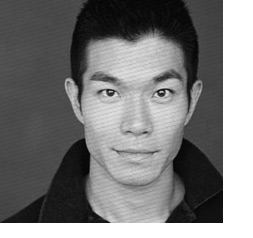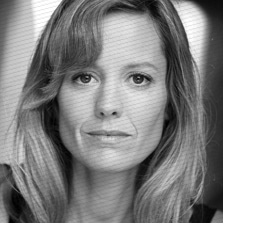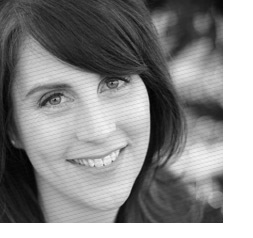PERFORMANCE: The Actors' Roundtable: "The Empty Space"
 Paden Fallis |
Paden Fallis |  November 2, 2012
November 2, 2012
 |
 |
|
For 12 weeks, Paden Fallis posed one question each week to a group of professional working actors from a variety of backgrounds in an effort to dig a bit deeper into their artistic working processes. In this second series of 12, an expanded group of actors explores where their art fits into the larger cultural context.
In 2011, The Intiman Theatre, a powerhouse in the Seattle theatre scene, abruptly cancelled their season due to financial troubles and a 2.3-million-dollar debt. The entire staff was laid off and the long-running, award-winning theatre’s future was up in the air. In other news, at the start of Peter Brook’s seminal book, The Empty Space, published in 1968, Brook says this: I can take any empty space and call it a bare stage. A man walks across this empty space whilst someone else is watching him, and this is all that is needed for an act of theatre to be engaged. Brook’s thoughts. Intiman’s predicament. What am I missing here? Discuss… - Paden Fallis, Performing Arts Contributing Editor |
|
|

There are fewer and fewer people willing to watch a man simply walk across an empty space, and therefore that empty space becomes more and more expensive to fund. To ameliorate the situation, the empty space tries to find a better man to do a more dazzling walk, and this too, adds to the dilemma as the debt careens higher. The empty space charges more and more for the spectacle they’ve saddled upon their weak shoulders, and the people who have always loved to simply watch a man walk across that empty space cannot afford the bloated rates, and even if they could, they wouldn’t recognize the awkward gait that the deformed man is using to amble across that once-heralded empty space. In the end, only footprints remain, tracing a path through bile, leading to the lifeless form of the man, laying face down in the space, dead from disease and betrayal. But it matters not. The man, now alive and vibrant, is on HBO, and we are all too busy watching to notice. |
|
|

I think that, as in real life, theaters tend to live according to their means. In the constant effort to strive for more quality, more resources, and more up-to-the-minute ways of doing things (taking advantage of technological advancements and so forth), there is rarely any surplus of revenue (especially in not-for-profit organizations where they have to constantly be justifying their income with necessary expenditures to meet their stated goals). In a world structured like that, it’s easy to see how a theater can go into debt, as their overhead increases along with their popularity. The artist in me sees how one thing could lead to another until before long a company can lose sight of the real goal—to create inspired and moving theater—as pressure mounts. After all, we live in a very different world than the one Peter Brook lived in—audience expectations have risen as much as society’s expectations in general; every thought can be instantly tweeted or facebooked; “multi-media” presentations have gone from novel and inventive to almost mundane and certainly par for the course, including within the world of theater. It’s tough to say which came first—the expectation or the implementation of these elements—or whether audiences would be perfectly content to watch something much simpler and low budget. Not too many producers seem willing to take the chance. Sadly, the only place it seems these shoestring-budgeted, art-driven pieces are still widely respected is in the realm of theater festivals, where there still are independent producers of small, passion-driven shows. The only place the art is still king seems to be where there is little overhead and not much to lose if the show’s a flop. I have a lot of misgivings about these so-called “advancements” that take us, as theater artists and as a society, deeper and deeper into a world of instant gratification, of an averaging-out of content, and ultimately, of a lowering of the significance of a real connection. I feel like we’ve become more trite as a society, less interested in the message beyond the sound byte. It’s hard anymore to feel like we’re reaching for more humanistic meaning; we just seem to be reaching for…more. It’s easy to think that we don’t even know what we’re missing. But, again I wonder, are we simply underestimating our audience and their need to connect with that “man walking across the empty space”? |
|
|

In a world where “bigger is better”, Brook’s quote reminds us that the adage is not always true. Yet it leaves out a fairly important (albeit pragmatic) consideration—how is that artist going to eat? If one assumes that artists making their living as artists are valuable to society and culture at large…then you’ve already added another variable to the equation. The situation with Intiman is a sticky one. Here in Seattle, it’s been the topic of heated conversations and there are as many opinions about what happened, as there are artists who have opinions. That said, there is an expanse of ground between being able to pay artists and nearly bankrupting a theatre. (For the record, Intiman continues to reinvent itself, producing a 4-play repertory festival this summer that capitalized on local talent and was daring, innovative, and well received.) We can talk about the Broadway Industrial Complex or the business of running a theatre, but within the realm of the theatre artist’s everyday control is the tension between artistic risk and financial stewardship. Whether we like it or not, some artistic risks cost money. There are plenty that don’t, but sooner or later you’re going to be faced with the question, “to spend or not to spend”, and it falls on our own shoulders to determine how we want to negotiate that risk—and let’s admit that as often as not, artists play with a gambler’s instinct. Here’s something I know to be true. In either the Intiman or Brook’s scenario, there is the potential for sublime theatre and the potential for lousy theatre. We’re continually faced with the same question, “what kind of work am I going to create and what’s it going to take to create it?” |
|
|
|
|
Nelson Lee left his native Canada for New York to pursue training at the American Academy of Dramatic Arts. Since then, he has appeared in various television series, including Blade: The Series, Virtuality, Oz, Covert Affairs, Hawaii Five-O, and the Law & Order franchise. Recently, he took to the stage for the world premiere of Zayd Dorn’s play, Outside People, at the Vineyard Theater in New York, and the American Conservatory Theater (A.C.T.) production of Maple and Vine in San Francisco. He currently resides in Los Angeles. Laurie Okin is a Los Angeles-based actress who has been seen over the years in dozens of national commercials, as well as guest starring on The Office and as a series regular on PBS’s Copshop. She has also appeared in Samantha Who?, My Own Worst Enemy, Friends, and MadTV. Laurie also has an extensive background in the theatre and is a company member at The Road Theater and Rogue Machine Theater. Nikki Visel is an actor living just steps from the Space Needle in Seattle. She calls Taproot Theatre Co. her “home” theatre but is about to begin her second season touring with Seattle Shakespeare Company and has worked throughout the city. Her first full-length feature film, Nothing Against Life, will be released in 2013. |
| View all of our Roundtable discussions… |














